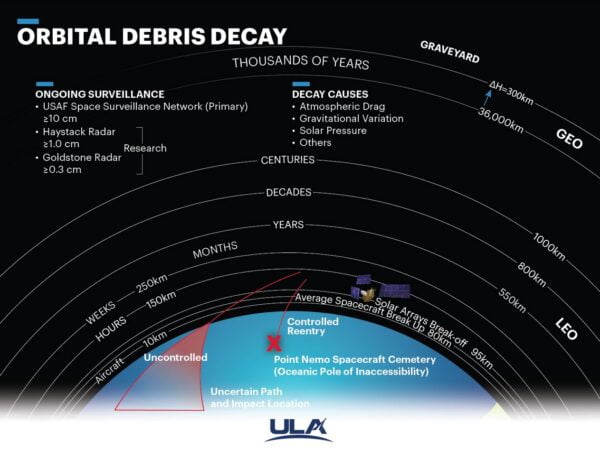
Why SpaceX Lowered Starlink’s Satellite Orbit, According to Elon Musk

Photo: Tory Bruno
SpaceX’s Starlink internet is just beginning to take off, and even while the company is beta-only with just half of its planned satellite constellation, the company is gaining high praise from fans, who are already asking about buying into the low-Earth orbit internet service.
United Launch Alliance President and CEO Tory Bruno shared a handy infographic about orbital debris on Wednesday, which SpaceX head Elon Musk called a “good chart.”
“Good chart. This is a major reason why we moved Starlink from ~1100km orbit to ~550km. Atmosphere automatically clears the lower altitude within a few years, so space junk cannot accumulate,” said Musk.
Following the April decision from the Federal Communications Commission (FCC) to let SpaceX’s Starlink satellites orbit at lower altitudes, Musk says the automatic reduction of space junk by Earth’s atmosphere was a major reason for the shift.
Good chart. This is a major reason why we moved Starlink from ~1100km orbit to ~550km. Atmosphere automatically clears the lower altitude within a few years, so space junk cannot accumulate.
— Elon Musk (@elonmusk) June 23, 2021
Later in the thread, when asked if Starlink planned to offer an Initial Public Offerings (IPO), in other words, to become a publicly-traded stock, Musk replied saying it would be “at least a few years” before the company went public, saying that “going public sooner than that would be very painful.”
The SpaceX head was also asked whether the company would offer Tesla shareholders “first dibs,” to which Musk replied, “Will do my best to give long-term Tesla shareholders preference.”
At least a few years before Starlink revenue is reasonably predictable. Going public sooner than that would be very painful. Will do my best to give long-term Tesla shareholders preference.
— Elon Musk (@elonmusk) June 24, 2021
SpaceX has launched roughly 1,800 satellites into orbit so far, according to SpaceX President Gwynne Shotwell, and plans to launch a total of 4,400 total by the end of 2022. The company also said Starlink is set to reach global coverage around September, though the company will still need to file for certain regulatory approvals at that point.
In other news, SpaceX announced on Thursday morning it is taking “additional time” for its pre-launch checks ahead of the Transporter-2 dedicated rideshare mission, which was slated for June 28.
Team is taking additional time for pre-launch check outs ahead of the Transporter-2 mission; will announce new target launch date once confirmed
— SpaceX (@SpaceX) June 24, 2021

